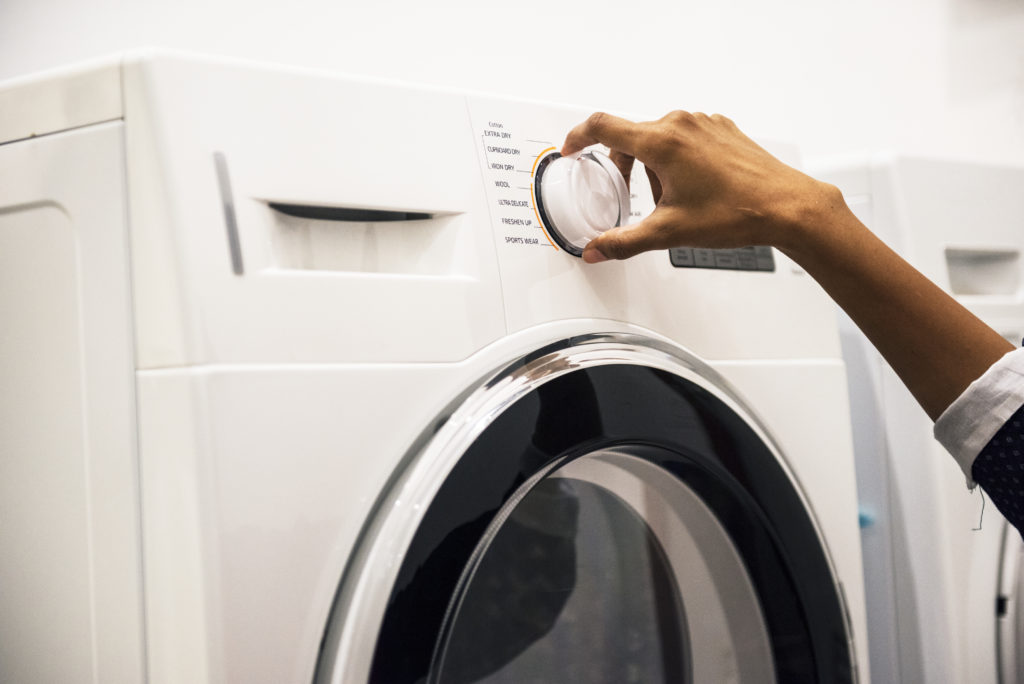6.3.19
Laundry rooms are at the top of homebuyers’ want lists

A laundry room simplifies one of your chores and makes your home more attractive to homebuyers.
One of the features today’s homebuyers want most is a room that’s hardly seen: a laundry room. According to Kiplinger, 91% of buyers want this feature, even if it’s just a closet.
If your home doesn’t have this highly-sought feature, you can create one, and the cost is relatively low. A small-scale project can be done for $1,000 to $5,000. However, a large scale, dual-purpose room may quickly top $20,000.
If you’re ready to build a laundry room, or update an existing one, here are factors to keep in mind.
Location
Locate your laundry room in a place that’s convenient for you. For some this is near bedrooms, even if it’s on the second floor. However, keep noise in mind if you build a laundry room near sleeping areas.
Usually the easiest place to add a laundry room is in the basement. An unfinished basement keeps the job simple because there is no demolition involved. Creating a laundry room or closet in an existing finished space requires more work and money, but can be worth it in terms of convenience and avoiding the hassle of carrying laundry up and down stairs.
Choosing a place near existing plumbing and electrical lines will also help save money since it limits how far you have to run additional lines.
Water considerations
Make sure there is a cutoff valve for both the hot and cold water. If a hose fails or the washing machine leaks, you want to be able stop the water flow quickly.
Put a drain pan under the washer to catch small leaks. And, considering that a washing machine may hold 30 or more gallons of water, and supply lines could fail, installing a floor drain is a smart idea if the location allows.
Be sure your water discharge line is properly sized and vented — a mistake here could overwhelm your existing plumbing and result in overflow of toilets, tubs or showers. If you’re doing the job yourself, make sure you adhere to all local codes.
Electric
The appliances you choose will determine your electrical needs. Most washers and gas dryers work with a standard outlet, but an electric dryer will likely need 240-volt service. Research your appliances ahead of time to ensure you have the right electric capacity.
Storage & Folding Space
At a minimum, you need a place for detergent, softener and stain removers. An appliance pedestal with a drawer may be all you need. Pedestals also have the added advantage of reducing how much you need to bend down to load and unload your machines. Otherwise, install cabinets or open shelving where you can easily access your laundry supplies.
If space allows, install a fold-out table for folding that can be tucked away when not in use.
Extras
Of course, your laundry room should reflect your taste and style. In addition to painting it a color you like and adding a decorative element or two, consider these extra touches to make the space work best for you:
- A wall-mounted drying rack that collapses when not in use is perfect for drying delicate and woolen clothes.
- A utility sink provides a place to clean those grubby items you don’t want in your kitchen sink.
- Consider, too, creating a dual-purpose space. Could your laundry room double as a mud room, pantry or workspace? (See more multi-purpose laundry room ideas here.)
Consumers helps more than 1,000 members finance land, homes, and home improvement projects each year. When you need a mortgage or home equity line of credit, call us at 800.991.2221. We’re here to help you get the home of your dreams!
![]()


